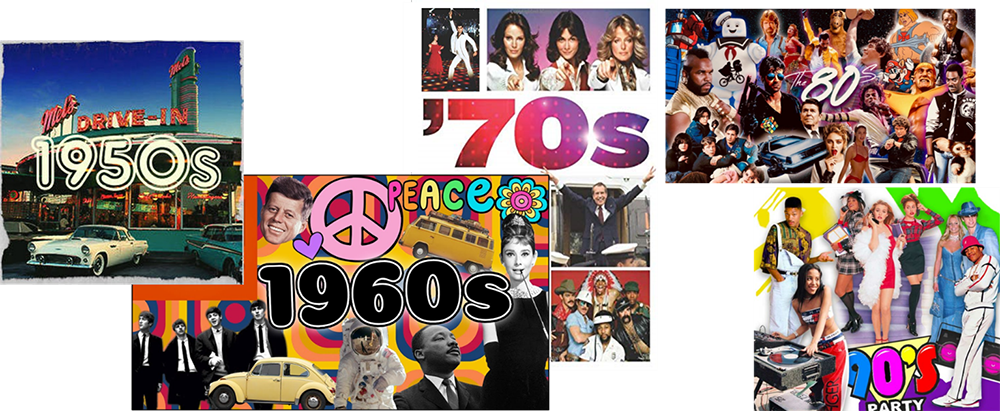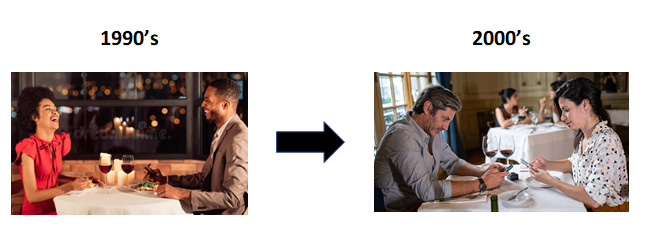
Are Shoppers Longing for a Simpler Time?
Filed Under: Shopper, Shopper Journey
Kathleen Blum
Vice President, Shopper Insights Research
Human beings tend to be creatures of habit. So, what happens when we are confronted by the type of unprecedented change that we have all faced over the last several years, like the pandemic, supply chain shortages, inflation, and more? Where do we turn for something comforting and familiar when everything around us is changing?
Retro Shopping Behavior Trends
When confronted with great change and uncertainty, humans tend to think back to an earlier time in their lives, when things were simpler, and draw comfort from the feelings of those ‘rose-colored’ memories.
While some changes may be exciting, too much change leaves us longing to create a bit of something from the past to bring back some of the positive memories and feelings we had (real or perceived) from that time. If we’re all honest, there is probably something in the pictures below that brings a warm feeling and a smile to your face when reminded of a favorite TV show, car, fashion, or music.

More Personal Engagement
Before the digital revolution of the 2000s, when smart phones became commonplace, there was a collective understanding of pop culture. Everyone knew of ‘Friends,’ ‘The Macarena,’ and Lunchables. There were universal topics that could be discussed with almost anyone. Since that time, culture has become more fragmented as technology allowed us to pursue different interests.

While technology certainly has its benefits and opens up access to worlds we never thought possible, the pandemic made technology a necessity. Suddenly, everything we did was tied to technology, making its use more of a chore than a choice. This caused technology fatigue among shoppers ( including younger generations), and a longing for a simpler, less complicated time when we didn’t have screen time 24/7 and could have more natural interactions with one another.
How To Connect With Shoppers Via Retro Trends & Personal Engagement
Human beings need connection, which is why nostalgia is such a powerful tool. Nostalgia or retro trends create a real physical and psychological response that instantly changes a person’s mood, opens the mind, and brings on feelings of comfort/happiness as it engages us in fond reflection of the past. However, there are ways to leverage the personal engagement we have with retro trends to make the most out of the experience for shoppers:
- Understand the post-digital era human: We are not the same as we were in the 90s, so there will need to be some relevance to the modern day. Combine heritage with conscious consumption, like a retro package design that is manufactured in a sustainable, natural, eco-friendly manner.
- Base nostalgic tools on human insights and what is happening to all of us as people and our culture, and give shoppers a measure of control in a world that feels out of control, through back-to-basics activities:
- Handmade/homemade
- Home Cooking
- Gardening
- Private Label Purchases
- Create content in context that cleverly takes shoppers to feelings of yesteryear. For example, living a life of intention and purpose is not new but has taken on new meaning post-covid, providing opportunities to engage shoppers by:
- Reminding them that life is there for them to live to the fullest and to make the most out of it
- Empowering them to dream and be creative
- Bringing them on the journey as you co-create a purpose pursuit together
- Forge Connections and a sense of community that we haven’t been able to enjoy for a couple of years through storytelling that humanizes brands and makes them more relatable. But think about your audience when you communicate – make sure it informs them about something of interest, provides entertainment, and focuses on the key points you’re trying to make.
As brands are always looking for ways to break through the clutter, retro trends may be one way to do this; nostalgia is a powerful tool that can open the shoppers’ mind to a connection with the brand through relevant content.
explore featured
Case studies

